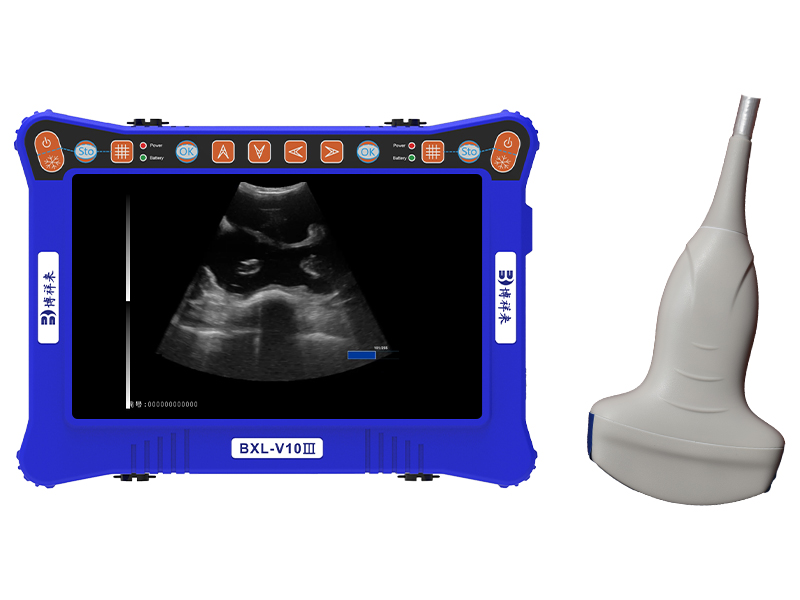In recent years, ultrasound technology has become a pivotal diagnostic tool in veterinary medicine, particularly for diagnosing cattle diseases. Ultrasound instruments have revolutionized the way veterinarians assess the health of livestock, enabling faster, non-invasive, and more accurate diagnoses. This article delves into the diagnostic effect of ultrasound instruments on cattle diseases, their applications, benefits, and how they enhance cattle health management.

Understanding Ultrasound Technology in Veterinary Medicine
Ultrasound, often referred to as sonography, uses high-frequency sound waves to create images of the internal structures of animals. In veterinary medicine, these sound waves are directed into the body, where they bounce off tissues and organs, and the returning echoes are converted into visual images on a screen. Unlike X-rays, ultrasound does not involve radiation, making it a safe and preferred method for diagnosing a wide range of conditions in cattle.
Key Applications of Ultrasound in Diagnosing Cattle Diseases
Ultrasound technology is widely used in diagnosing various diseases and conditions in cattle, from reproductive issues to gastrointestinal disorders. Here are some of the key applications:
1. Reproductive Health and Pregnancy Diagnosis
Ultrasound instruments are especially valuable in assessing the reproductive health of cattle. They allow veterinarians to:
- Detect pregnancy early in cows, ensuring proper care and management during gestation.
- Monitor fetal development and detect abnormalities like fetal death or deformities.
- Assess the health of the ovaries and uterus, identifying issues like cysts, infections, or uterine inflammation.
- Guide artificial insemination by determining the optimal time for breeding.
Early diagnosis of reproductive diseases can significantly improve breeding programs and prevent costly losses in livestock production.
2. Gastrointestinal and Liver Health
Ultrasound can be used to assess the health of the gastrointestinal system in cattle. It helps in detecting conditions such as:
- Bloat or excessive gas accumulation in the rumen, a common issue in cattle.
- Abnormalities in the liver, including liver abscesses or fatty liver disease.
- Diagnosis of gastrointestinal tumors, inflammatory bowel diseases, and other digestive disorders.
By providing clear images of the internal organs, ultrasound allows veterinarians to diagnose these conditions with precision, enabling timely treatment and better management of the cattle’s diet and overall health.
3. Cardiovascular and Respiratory Disease Detection
Ultrasound is also effective in detecting cardiovascular and respiratory diseases in cattle. It can reveal issues like:
- Heart murmurs, valve defects, or irregular heart rhythms.
- Pneumonia and other lung infections, which are common in cattle, especially in intensive farming systems.
- Pleural effusion (fluid accumulation in the lungs), which can be indicative of respiratory distress.
By identifying these issues early, ultrasound assists in managing cattle respiratory health, which is crucial for maintaining productivity and preventing herd-wide outbreaks.
4. Musculoskeletal Injuries and Lameness
Ultrasound imaging is invaluable in diagnosing musculoskeletal problems in cattle, such as:
- Tendon and ligament injuries, which can be common in working cattle.
- Joint issues, including arthritis and synovitis, which cause lameness and reduced mobility.
- Soft tissue damage from trauma or stress fractures.
Ultrasound allows for accurate evaluation of the musculoskeletal system, enabling veterinarians to recommend appropriate treatment and rehabilitation for affected cattle.
Benefits of Using Ultrasound for Cattle Disease Diagnosis
1. Non-Invasive and Safe
One of the primary benefits of ultrasound technology is that it is non-invasive. Unlike traditional surgical procedures or X-rays, ultrasound does not require cutting into the animal or exposing it to radiation. This makes it a safe and stress-free option for cattle, particularly in routine health checks.
2. Early Detection of Diseases
Ultrasound enables early detection of health issues that may otherwise go unnoticed until they reach advanced stages. For example, detecting a pregnancy early can allow farmers to adjust their care routines and feed the cow accordingly. Similarly, identifying early signs of infections or metabolic disorders helps in administering treatment before the condition worsens.
3. Real-Time Imaging
Ultrasound provides real-time imaging, meaning that veterinarians can immediately assess the condition of the cattle without having to wait for test results. This makes ultrasound an efficient diagnostic tool, especially in large-scale farms where time is critical.
4. Improved Accuracy
Unlike other diagnostic tools, ultrasound offers high accuracy in visualizing soft tissues and organs. This helps veterinarians make precise diagnoses and avoid misdiagnoses, ultimately leading to better treatment plans.
Challenges and Considerations
While ultrasound is an incredibly valuable tool, there are some challenges to its use:
- Skill and Expertise: Accurate interpretation of ultrasound images requires specialized training and experience. Veterinarians need to be skilled in both operating the ultrasound machine and analyzing the resulting images.
- Equipment Costs: High-quality ultrasound machines can be expensive, making them less accessible to smaller farms or veterinarians with limited resources. However, the long-term benefits often outweigh the initial investment.
tags: Ultrasound InstrumentsUltrasound Instruments on Cattle


